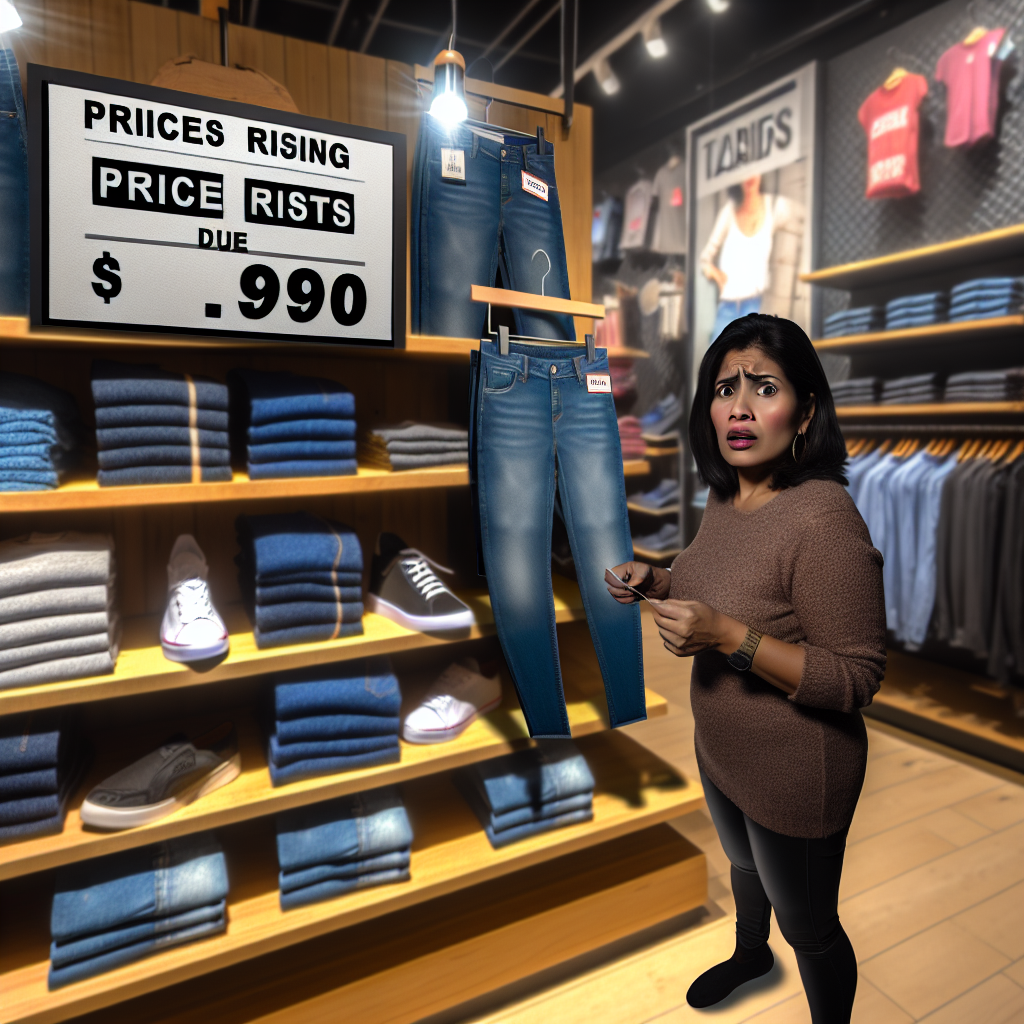Tariffs Will Make Sneakers, Jeans, and Almost Everything Americans Wear Cost More, Trade Groups Warn
Introduction: The Looming Cost of Trade Tensions
As global trade disputes continue to intensify, U.S. consumers may soon be facing higher prices on everyday fashion essentials—including sneakers, jeans, t-shirts, and outerwear. Trade groups across the fashion and apparel industries are sounding alarms over new and expanded tariffs that could significantly impact retail prices and consumer spending habits. According to leading fashion coalitions, proposed increases in tariffs on Chinese-manufactured goods could ripple through all strata of American wardrobes, making it more expensive to dress from head to toe.
Understanding Tariffs and Their Fashion-Forward Impact
Tariffs are taxes imposed by a country on imported goods. The intent, often rooted in protecting domestic industries, can backfire by raising costs across supply chains. In the case of apparel and footwear, many American brands rely heavily on production facilities in China and other countries for cost efficiency and scalability. When tariffs are imposed on raw materials or finished products, those extra expenses are routinely passed on to the end consumer.
Clothing and accessories—especially those made in China—are on the front lines of the recent trade policy developments. Industry experts warn that even modest tariff hikes could lead to double-digit increases in retail prices, particularly on high-volume items like denim, sneakers, and outerwear.
Footwear and Apparel Sectors Brace for Impact
Why Sneakers May See a Surge in Price
The footwear industry is especially vulnerable to tariff increases. According to the Footwear Distributors and Retailers of America (FDRA), over 70% of all shoes sold in the United States are manufactured in China. The proposed tariffs could add an additional 25% surcharge to these goods, drastically raising the price point on everything from basic athletic sneakers to high-end name brands. For consumers, what once cost $100 could soon jump to $125 or even more.
FDRA President and CEO Matt Priest warns, “These tariff hikes are essentially a hidden tax on American families. They disproportionately affect low- and middle-income consumers who rely on affordability and durability in footwear.”
The Denim Dilemma
Jeans—an absolute staple in American fashion—are also in the crosshairs. With a significant portion of denim imported from China, tariff implications are expected to increase prices nationwide. The American Apparel & Footwear Association (AAFA) has noted that a rise in tariffs could compel companies to either absorb the costs, thus risking profitability, or transfer those costs to customers.
Many retailers may find the latter option unavoidable, leading to a new era of expensive basics. Where $40 jeans were once the norm at department stores and big-box retailers, shoppers may now encounter price tags beginning at $50 or $60.
Industry Trade Groups Strike a Chord of Unity
Nearly 30 trade organizations, including the FDRA and AAFA, have joined forces to lobby against the proposed tariff increases. These groups represent thousands of businesses—from multinational corporations to local designers and manufacturers—concerned about long-term sustainability and consumer spending power. The coalition urges U.S. policymakers to reconsider the impact of aggressive tariff strategies on both domestic retailers and end-users.
“While the intent may be to challenge China’s economic policies and practices,” says AAFA President and CEO Steve Lamar, “the fallout from these tariffs is primarily landing on American businesses and consumers.”
Shoppers’ Reactions and Economic Repercussions
Consumer Behavior in Flux
As prices rise, experts predict a notable shift in customer behavior. Budget-conscious buyers may begin prioritizing essential items and delaying discretionary purchases. Luxury and premium brands could experience dips in sales, while discount and thrift markets might witness a resurgence in popularity.
Furthermore, e-commerce platforms may gain an edge as consumers hunt for off-price or foreign-based alternatives to tariff-impacted goods sold by U.S. retailers. This shift might accelerate the ongoing digital transformation of the fashion retail landscape.
Ripple Effects on Employment and Retail Jobs
Beyond higher consumer costs, there’s concern that prolonged tariffs could have a chilling effect on job creation within the fashion and retail sectors. Brands facing lower margins may pause expansion, scale back employment, or shutter less-profitable locations. The pressures could be especially pronounced for small businesses, which often lack the capital to absorb large cost increases.
A Call for Policy Reevaluation
The trade groups have urged government officials to adopt a more targeted and transparent approach to economic diplomacy. Their proposed alternative includes stronger negotiations with China focused on specific problem areas such as intellectual property theft and forced technology transfers, rather than sweeping tariff hikes that also penalize American consumers.
The Biden administration’s trade policy is under scrutiny, with some officials signaling openness to reviews of past tariffs implemented under prior administrations. However, no concrete rollbacks have been enacted, and uncertainty still looms over the fate of large swaths of the fashion supply chain.
Looking Forward: Potential Strategies for Mitigation
Supply Chain Diversification
In response to mounting pressure, many U.S. fashion brands are exploring alternatives to heavy reliance on Chinese manufacturing. Countries like Vietnam, Bangladesh, and Mexico have emerged as potential new fashion production hubs. However, the transition isn’t immediate. Shifting supply chains takes time, investment, and capacity building—meaning rising prices may remain the norm in the near term.
Innovation in Domestic Manufacturing
The current crisis also presents an opportunity for innovation on home soil. A growing interest in reshoring—bringing manufacturing back to the U.S.—could help reduce reliance on foreign production. While initial costs may be higher, new technologies such as automation and 3D manufacturing could eventually streamline domestic production and lower long-term expenses.
Conclusion: In Fashion, Every Thread Tells a Story
The fashion landscape in the U.S. is at a critical juncture, with imports, tariffs, and retail economics intersecting in complex ways. As trade tensions continue to rise, the consequences will reverberate beyond corporate boardrooms, directly affecting the everyday choices of American consumers. The threads of globalization are intricately woven into the jeans we wear and the sneakers we lace up each morning—and those threads are now being pulled by policy shifts nearly 7,000 miles away.
Whether through smarter diplomacy, supply chain innovation, or consumer advocacy, the fashion and apparel industry must navigate these challenges with precision. For now, shoppers may need to brace themselves for price hikes—and start thinking twice about that extra pair of jeans or sneakers at checkout.











